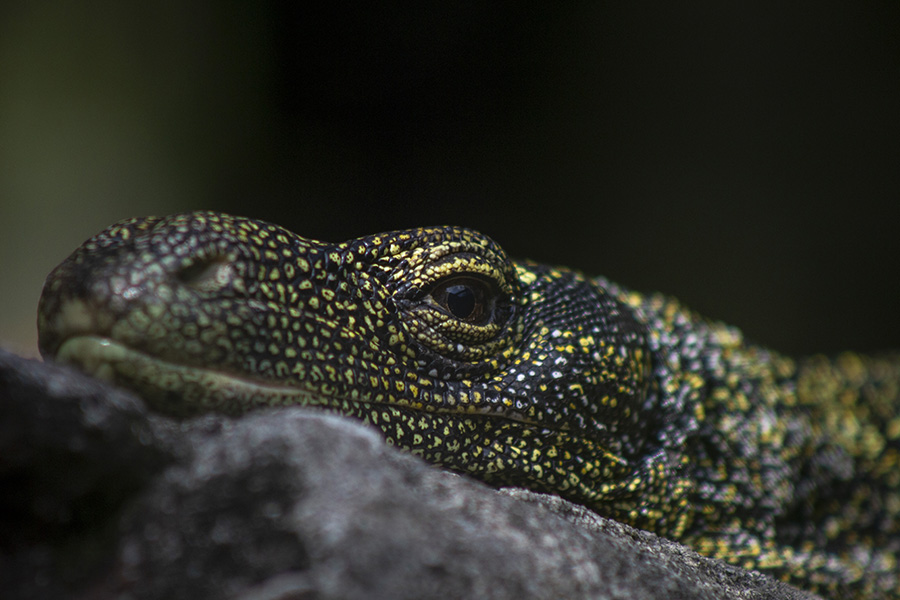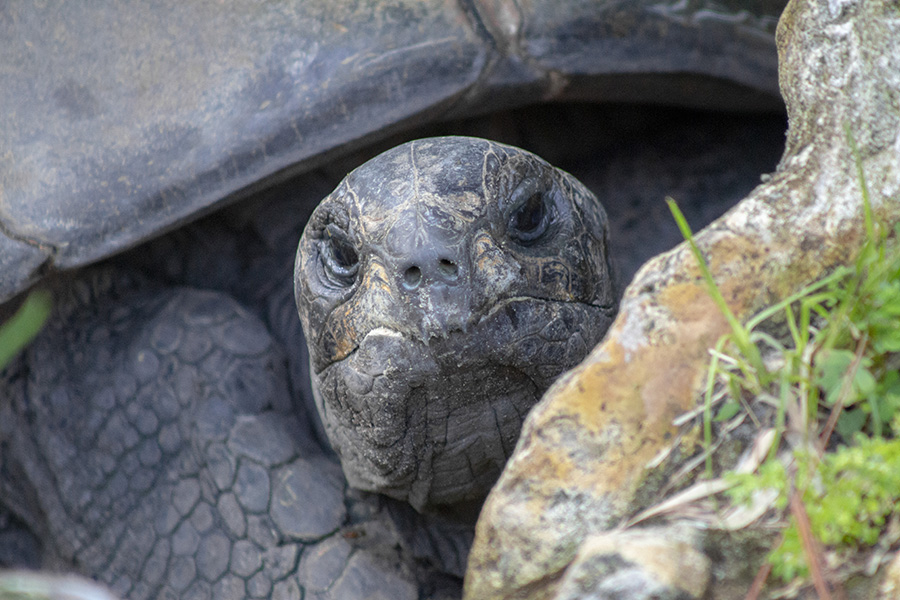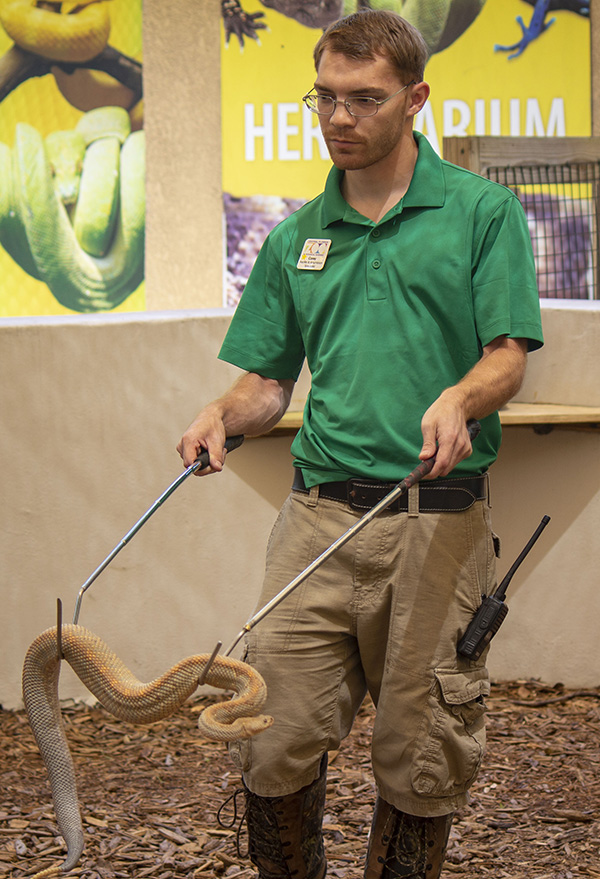
A crocodile monitor resting in his habitat outside our herpetarium.
Happy Reptile Awareness Day! If you ask a “non-native” to describe Florida, you’ll probably hear about reptiles, especially ‘gators and crocodiles (Florida is the only place in North America crocodiles can be seen in their natural habitat)! We’re also home to fifty species of snake (only six are venomous), sea turtles, gopher tortoises and plenty of other cold-blooded critters.
Reptiles have survived millions of years thanks to amazing adaptations. If you woke up as a reptile, you’d be on serious sensory overload! Several lizards can “see” ultra-violet radiation and some species have heat-sensing organs to detect infra-red. Many have a sophisticated organ system to pick up scent particles when they flick those long, forked tongues. You may also be surprised to learn reptiles are highly receptive to sounds carried at very low wavelengths!

Angel, our Aldabra tortoise is the second-largest species of tortoise in the world!
They’re not soft and fuzzy but the thick, armored skin of reptiles is composed of scales or an exoskeleton—bones literally on the outside of their body. Contrary to popular belief, turtles and tortoises can’t outgrow their shell; it is directly connected to their vertebral column!
The Center for Biological Diversity has pointed out reptiles are valuable indicator species—a diverse community of reptiles within a given area indicates a healthy ecosystem. Nevertheless, the International Union for Conservation of Nature considers over 20% of the world’s reptiles endangered or near-extinction due to severe habitat loss, disease and climate change.

Corey, a member of our reptile care team presenting an Aruba Island rattlesnake during the Venom! show which can be seen at noon on the weekends outside our herpetarium.

An Eastern indigo snake at our O.C.I.C. facility in Central Florida.
The Eastern indigo is a non-venomous, long and iridescent snake native to the southeastern region of the United States. Their natural habitat includes sandhills and wetlands of the longleaf pine ecosystem which has been severely altered or destroyed. Eastern indigos are also a casualty of the illegal persecution of eastern diamondback rattlesnakes.
These snakes are recognized as a threatened species and are protected by the Federal Endangered Species Act. As many efforts are being made to restore longleaf pine forests, Eastern indigos play a vital role as an indicator species so their release into these restored areas is a step for recovery.
In 2014, we partnered with The Orianne Society, an organization dedicated to the conservation of reptiles and amphibians in their native habitats. Our facility in Central Florida, the Orianne Center for Indigo Conservation is designed specifically for reproduction and reintroduction of these snakes into their native habitat.
Your support can help reptiles continue to succeed! A simple way to have a mutually beneficial relationship with reptiles is to make your backyard a great habitat for them—in return, you’ll have fewer insects and rodents. You can also consider gifting the O.C.I.C. or another reptile conservation group of your choice to show support for our furless friends!